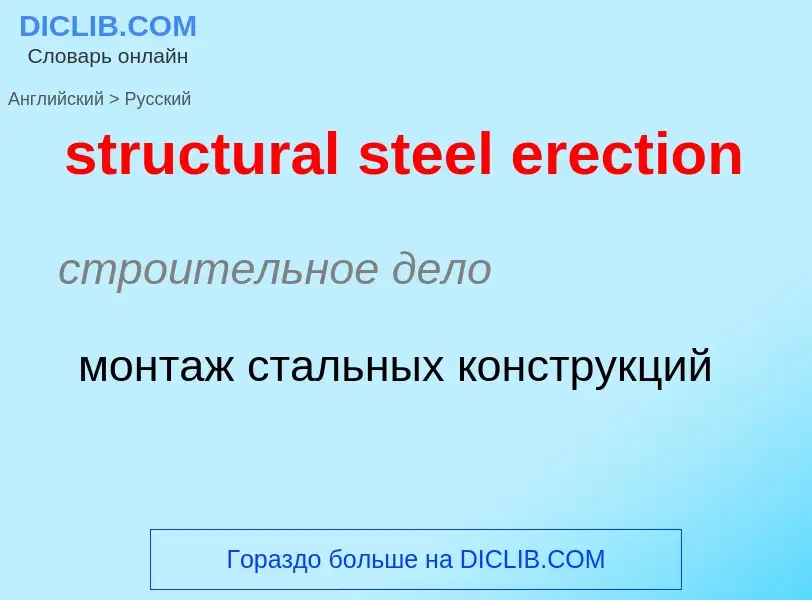Translation and analysis of words by artificial intelligence
On this page you can get a detailed analysis of a word or phrase, produced by the best artificial intelligence technology to date:
- how the word is used
- frequency of use
- it is used more often in oral or written speech
- word translation options
- usage examples (several phrases with translation)
- etymology
structural steel erection - translation to russian
строительное дело
монтаж стальных конструкций
строительное дело
проектирование стальных конструкций
Definition
Wikipedia
Steel Design, or more specifically, Structural Steel Design, is an area of structural engineering used to design steel structures. These structures include schools, houses, bridges, commercial centers, tall buildings, warehouses, aircraft, ships and stadiums. The design and use of steel frames are commonly employed in the design of steel structures. More advanced structures include steel plates and shells.
In structural engineering, a structure is a body or combination of pieces of the rigid bodies in space that form a fitness system for supporting loads and resisting moments. The effects of loads and moments on structures are determined through structural analysis. A steel structure is composed of structural members that are made of steel, usually with standard cross-sectional profiles and standards of chemical composition and mechanical properties. The depth of steel beams used in the construction of bridges is usually governed by the maximum moment, and the cross-section is then verified for shear strength near supports and lateral torsional buckling (by determining the distance between transverse members connecting adjacent beams). Steel column members must be verified as adequate to prevent buckling after axial and moment requirements are met.
There are currently two common methods of steel design: The first method is the Allowable Strength Design (ASD) method. The second is the Load and Resistance Factor Design (LRFD) method. Both use a strength, or ultimate level design approach.

